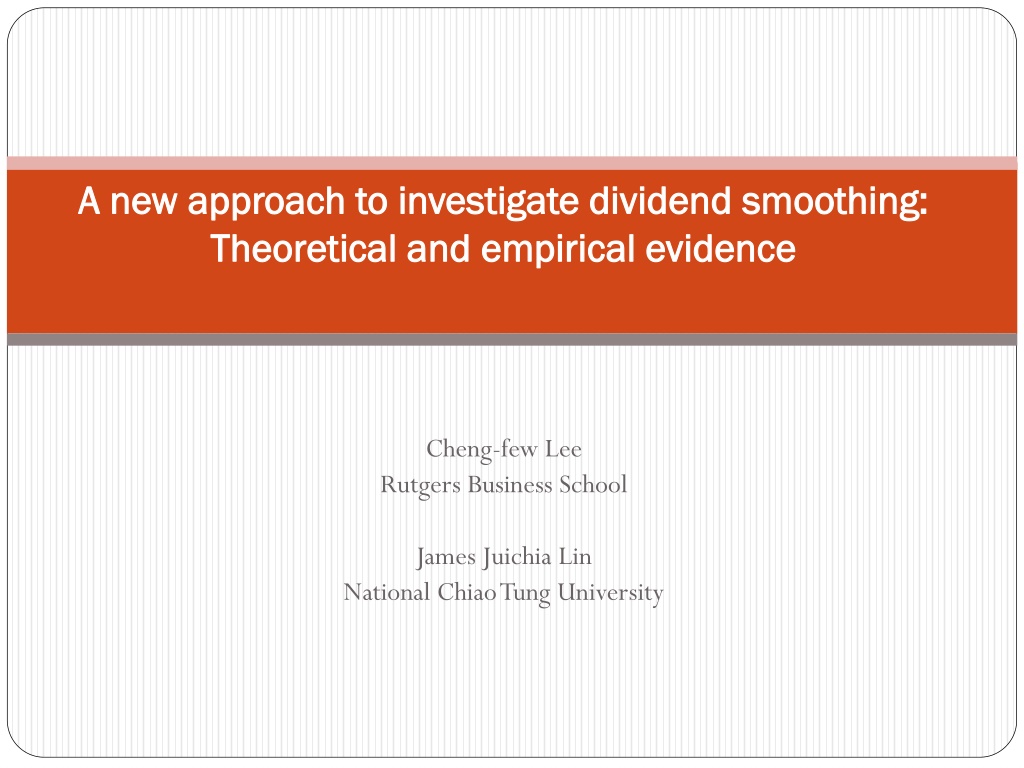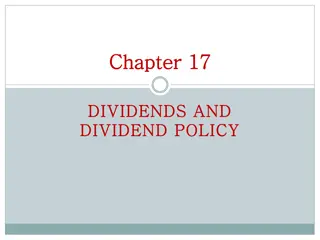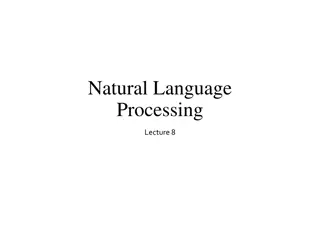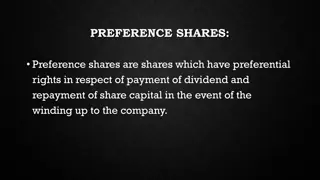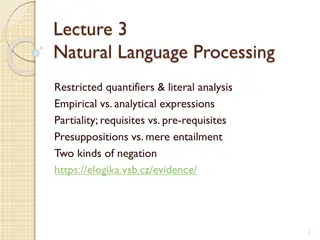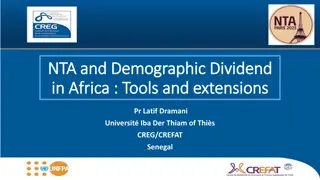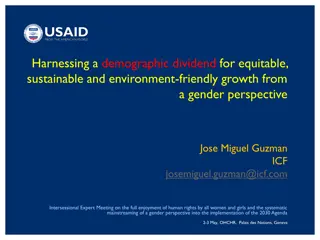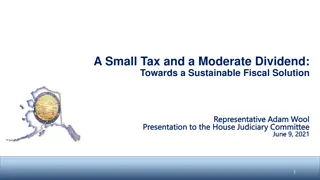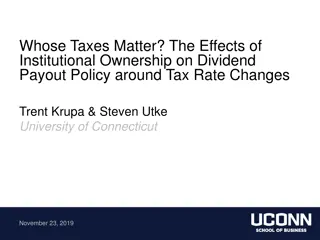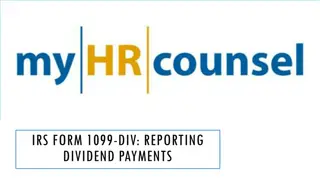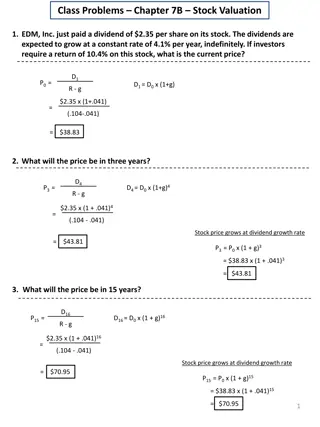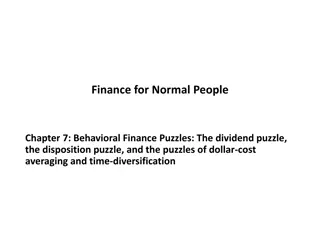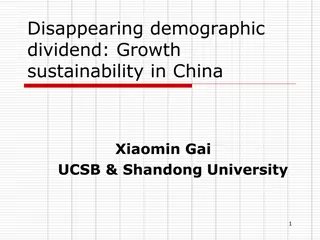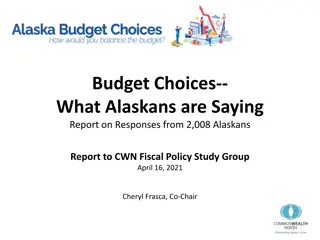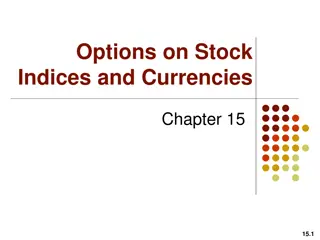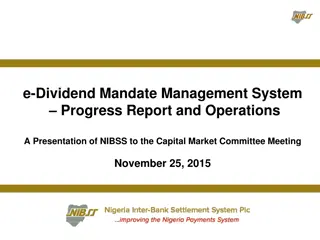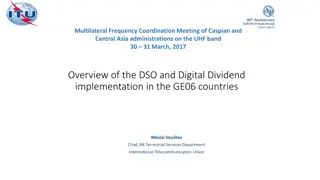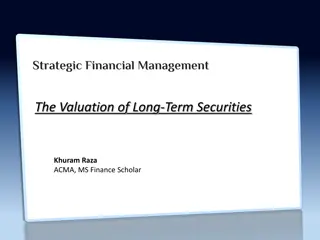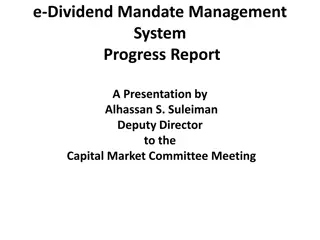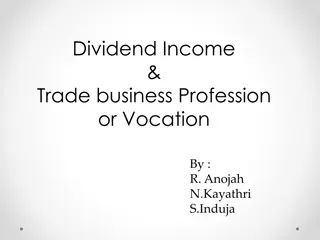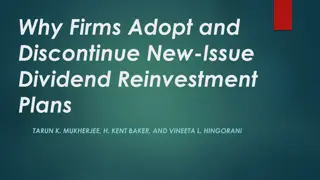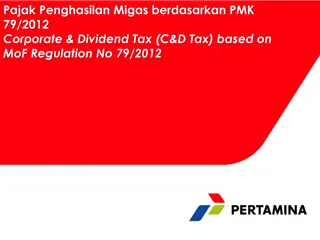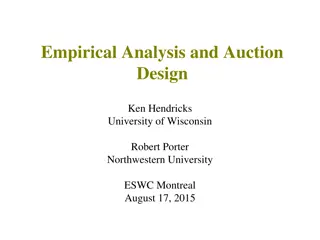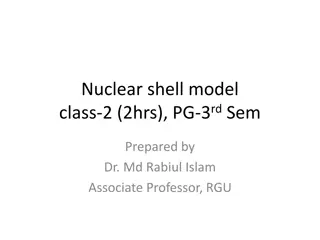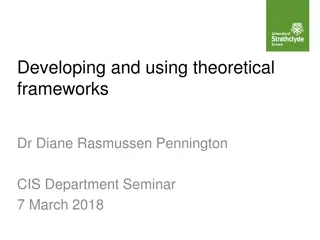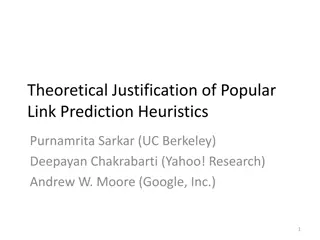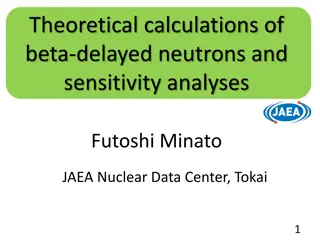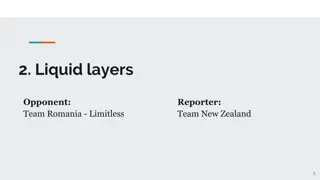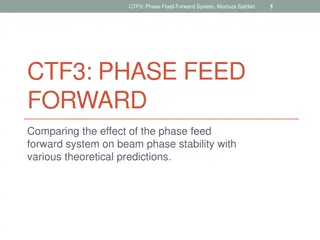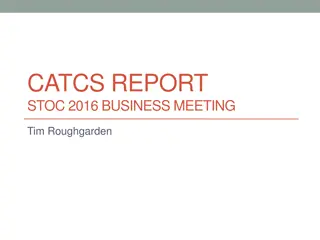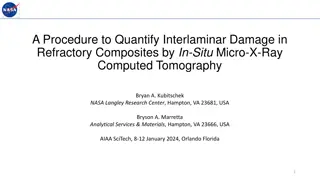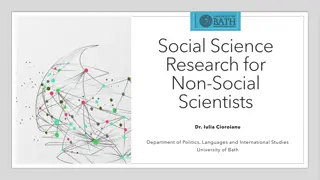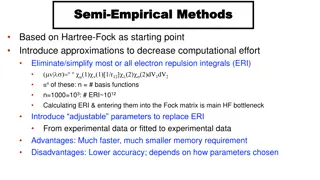Investigating Dividend Smoothing: Theoretical & Empirical Analysis
Dividend smoothing behavior in corporate finance is investigated through the partial adjustment and information content hypotheses. A new integrated model is proposed to evaluate dividend smoothing behaviors, contributing to a deeper understanding of firm tendencies to smooth dividends. Empirical evidence challenges the development of measures capturing dividend smoothing across different motives.
Download Presentation

Please find below an Image/Link to download the presentation.
The content on the website is provided AS IS for your information and personal use only. It may not be sold, licensed, or shared on other websites without obtaining consent from the author. Download presentation by click this link. If you encounter any issues during the download, it is possible that the publisher has removed the file from their server.
E N D
Presentation Transcript
A new approach to investigate dividend smoothing: A new approach to investigate dividend smoothing: Theoretical and empirical evidence Theoretical and empirical evidence Cheng-few Lee Rutgers Business School James Juichia Lin National ChiaoTung University
Introduction Dividend smoothing behavior has been well-documented in corporate finance for decades, but there is surprisingly little consensus on the debate of explaining dividend smoothing from two different prevailing views: the partial adjustment and information content hypothesis. Partial adjustment hypothesis: firms gradually adjust their dividend to a given change in earnings over time; consequently, dividends tend to lag behind earnings. Information content hypothesis.: firms attempt to convey managerial expectations of long-term earnings via dividend policy; consequently, dividend leads earnings. Given the different nature of the hypotheses, the empirical evidence presents a challenge for developing measures to capture dividend smoothing behavior across different motives (Leary and Michaely, 2011).
Introduction In this study, we follow Lee et al. (1987) to propose the integrated model that integrates two alternative dividend smoothing hypotheses to evaluate dividend smoothing behaviors and contribute our understanding of what determines a firm s propensity to smooth dividend. The partial adjustment model proposed by Linter can be characterized as Equation (1) and (2).
By using this generalized framework, Lee et al. (1987) document that alternative dividend behavior policies listed in Table 1 can be testified.
Estimation of Integrated Model Estimation of Integrated Model
Sample Selection and Model Estimations Sample Selection and Model Estimations The sample period for this study extends from 1989 to 2016 with all firms, excluding financial firms (SIC code: 6000-6999). We require each firm to have financial and accounting data available in both CRSP and Compustat databases.
To provide further information on dividend payout policy, we classify firms dividend payout patterns into five different policies shown in Table 3 according to the parameter specified in the integrated model.
Firm characteristics and Dividend Payout Policies Firm characteristics and Dividend Payout Policies
Summary and concluding remarks Summary and concluding remarks we develop a generalized empirical model that integrates two alternative dividend smoothing hypotheses and measure dividend smoothing behaviors through two channels: (1) lagging channel with speed of adjustment and (2) leading channel with earnings expectation coefficient (?). First, by using cross-sectional analysis, our findings show firms with a greater monitoring mechanisms smooth dividend more through lagging channel (SOA) and leading channel (?). Meanwhile, our results indicate firms subject to higher information asymmetry or lower growth opportunity will smooth dividend more through the leading channel. Second, we explore time trends in dividend smoothing by estimating annul level dividend smoothing measures. We show that the results with panel data analysis are similar to the findings in the cross-sectional analysis. Finally, we investigate the general relation between dividend smoothing and future earnings. Our findings support the notion that dividend smoothing conveys information about future earnings through leading channel (?) instead of lagging channel (SOA) as suggested in the generalized model.
